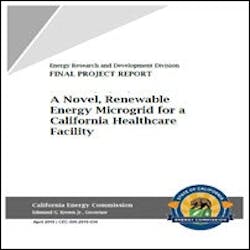The California Energy Commission awarded a $4.78M grant to Charge Bliss, Inc. through PON- 14-301 to design, engineer, build, and operate the first renewable energy microgrid for a hospital in California at the Kaiser Permanente facility in Richmond, California. The hospital is the only general hospital serving western Contra Costa County providing essential services to the surrounding community. Moreover, the region is affected by high levels of environmental pollution and the consequent health impacts. The project also developed a novel microgrid controller that can island the hospital’s life safety emergency power branch, including emergency lighting and exit signs, and provide power services during emergencies. During nonemergency periods, the controller enabled the microgrid to achieve performance goals such as reducing utility energy consumption, site peak load, and utility costs with the capability to participate in demand response and electrical islanding.
Charge Bliss proposed to overcome a number of barriers to the development of renewable energy microgrids for hospitals. This included engagement with the Office of Statewide Health Planning and Development to identify relevant regulatory requirements for the build-out of the microgrid and methods to comply with them, define approaches to permitting and approvals, demonstrate interconnection with the investor-owned utility, and illustrate the feasibility and value of renewable energy microgrids to healthcare stakeholders. At the behest of the Office of Statewide Health Planning and Development, the system was allowed to have a discretionary second point of interconnection to the hospital’s emergency power system. This allows for islanding of essential systems in the event of grid outages. The team demonstrated the ability to lower the gross facility utility cost by 15 percent through a combination of solar generation and time-shifting of use, energy arbitrage, and demand reduction. The team anticipates further value from grid services such as automated demand response.
